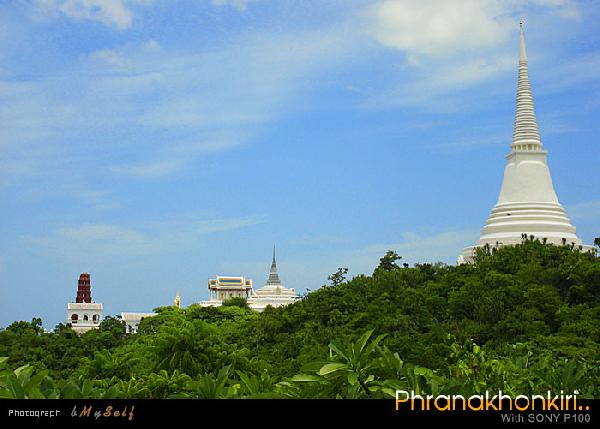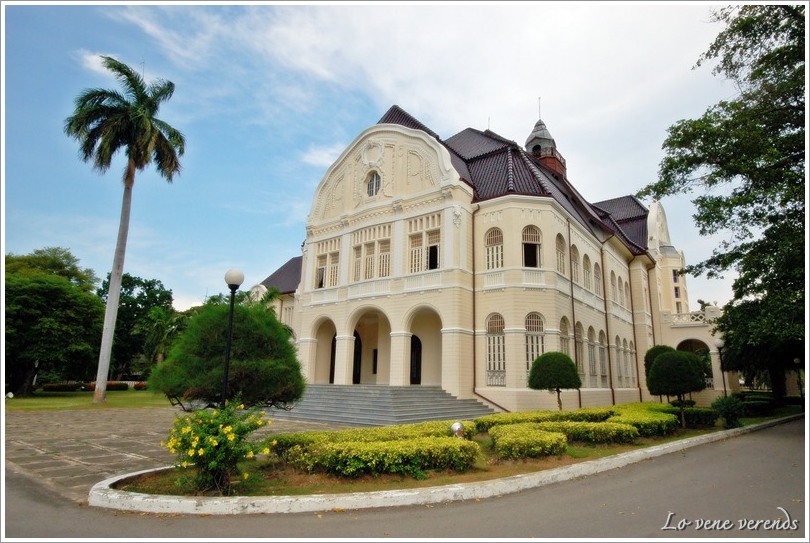In ancient times, the appeal of Phetchaburi attracted settlers from far and wide, which has lead to the provinces’ uniquely diverse culture, influential art and the wonderful architecture of its many temples and palaces. It’s not hard to see why Phetchaburi is as popular today as it was in ancient times.
Phetchaburi, a province full of surprises, is Thailand’s gateway to the south. This relatively undiscovered treasure boasts fascinating history; ancient art, captivating culture, friendly people, and of course, stunning scenery. Its wonderful beaches, interesting caves and delicious seafood and local delicacies will ensure tourists leave with fond memories, and maybe even a few souvenirs.
|

|
Phanakhonkiri
Khao Wang hill is 92 meters high and in the Amphoe Muang region. Its was special place to King Mongkut who commanded a palace be built on the top of the three peaks. Temple sits on the three peaks facing to the east and west, offering magnificent views. Khao Wang was completed in the year 1860 and was to be used for the King’s holidays. Despite naming it Phra Nakhon Khiri, Phetchaburi inhabitants have referred to it as “Khao Wang” until now.
King Mongkut himself cultivated the European way of life and was the first Thai ruler to learn a European language. His interests included mathematics, astronomy and political science. Like no other building in Thailand, this palace expresses the cosmopolitan way of life of the Thai kings.
Both summits of Khao Wang are attainable by paths. From the road which crosses the hill in the north, visitors reach the palace grounds on the north-west summit either via a flight of steps flanked by ‘Nagas’ or on a small track-railway, which cooperates during opening times. Remains of the fort, now inhabited by colonies of monkeys, and buildings used by royal guards are visible along the route. The site of the royal palace is open to the public if no members of the royal family are in residence. The extensive terraces offer a fine view of the valley and the small town of Phetchaburi.
|
|

|
Phra Ratchawang Banpuen
This palace was originally called Ban Puen Palace. King Chulachom Wao, Rama V, desired to have it built as a rainy season retreat with his own money. The plot of land was bought from a villager and the design was made by a German, Mr. Karl Deurring. Admiral HRH Prince Boriphat of Nakhonsawan and HRH Prince Damrong were assigned to monitor the construction. The palace is of European design and construction began in 1909 and was completed in 1916.
The palace was named during the reign of King Rama VI as Son Phetch Prasat Palace. The name was changed to be Phraram Ratchaniwet in the year 1918
|
| Vehicle |
Service Rate |
 |
1,800 THB. |
 |
2,000 THB. |
 |
2,500 THB. |

